
island of blue dolphins pdf
Island of the Blue Dolphins by Scott O’Dell is a captivating novel based on the true story of a young Native American girl’s survival on a remote island. This timeless tale explores themes of resilience, self-discovery, and harmony with nature, making it a beloved classic in children’s literature.
Island of the Blue Dolphins follows Karana, a young Native American girl, who becomes stranded on an island after her brother’s death. She learns to survive, thrive, and embrace solitude.
2.1. Plot Overview
The novel begins with Karana, a young Native American girl, living on an island off the coast of California with her tribe. After a tragic encounter with Russian hunters (Aleutians) and the death of her brother Ramo, Karana is left alone on the island. She learns to fend for herself, building shelter, finding food, and defending against wild animals. Over time, she discovers her own strength and resilience, developing a deep connection with nature. The story follows her journey of survival, self-discovery, and growth, as she transforms from a vulnerable girl into a capable and independent individual. Based on the true story of a woman who lived alone on San Nicolas Island, the novel captures her emotional and physical challenges, ultimately revealing her ability to thrive in isolation. The plot is a testament to human endurance and the bond between humans and the natural world.
2.2. Key Chapters and Analysis
The novel is divided into chapters that highlight Karana’s journey of survival and self-discovery. Early chapters focus on her separation from her tribe and initial struggles on the island. Chapter 4, where Karana builds her shelter, showcases her resourcefulness and determination. Chapter 7 introduces Rontu, the wild dog she tames, symbolizing her ability to form connections in isolation. Chapter 10 details her encounter with the Aleutian hunters, emphasizing her courage and strategic thinking. Chapter 12 explores her emotional growth as she reflects on her past and present life. Chapter 15 marks her ultimate acceptance of her solitude, demonstrating her resilience; Each chapter reveals Karana’s transformation from a vulnerable girl to a self-sufficient individual, illustrating themes of survival, resilience, and the human bond with nature.
2.3. Climax and Resolution
The climax of Island of the Blue Dolphins occurs when Karana, after years of solitude, encounters Aleutian hunters who have come to the island. Despite her initial fear, she cleverly avoids them and survives the encounter. The resolution comes when Karana decides to leave the island, marking the end of her isolated life. She sails to the mainland, where she is reunited with her people. However, she carries the lessons and strength she gained on the island with her. The novel concludes with Karana reflecting on her journey, emphasizing themes of survival, resilience, and the enduring connection between humans and nature. Her story becomes a testament to the power of self-reliance and adaptability in the face of adversity.
Character Analysis
Karana, the protagonist, embodies courage, resilience, and adaptability. Her journey reveals a deep connection to nature and her heritage, showcasing her growth from a young girl to a self-reliant woman.
3.1. Major Characters
The novel focuses on Karana, a young Native American girl, who is the protagonist and central figure. She is brave, resourceful, and determined, surviving alone on the island. Her brother, Ramo, plays a significant role early in the story, showcasing his youthful energy and curiosity. Tutok, a friend from a neighboring island, represents connection and support. Rontu, Karana’s loyal dog, symbolizes companionship and protection. The Aleut captain, a hunter, embodies external threats and cultural clashes. These characters drive the narrative, highlighting themes of resilience, isolation, and growth.
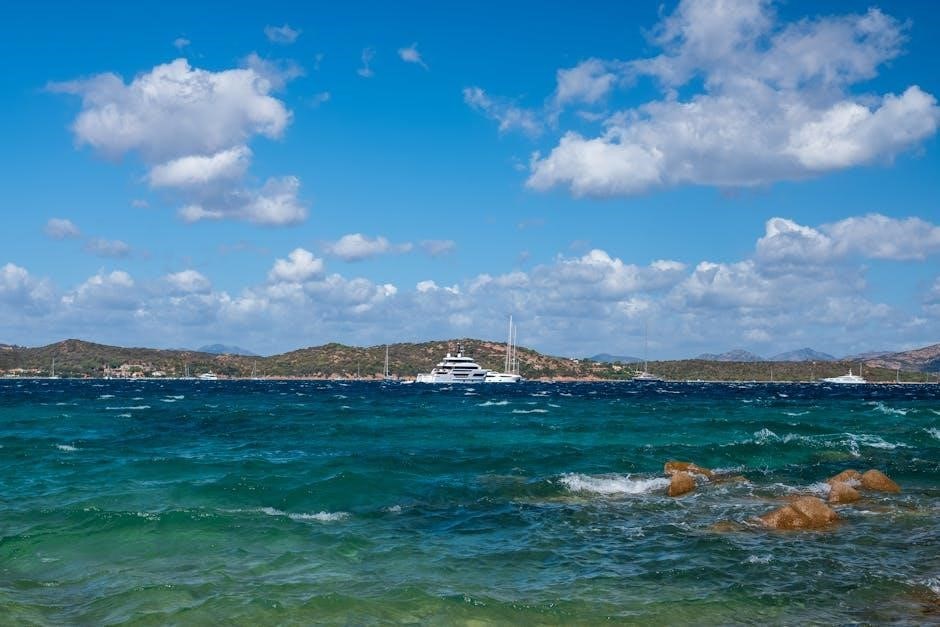
3.2. Minor Characters
The minor characters in Island of the Blue Dolphins play pivotal roles in shaping Karana’s journey. Ulape, Karana’s sister, is mentioned briefly but symbolizes family bonds and loss. The Aleut Captain represents external threats and cultural conflicts, driving Karana’s initial isolation. Tutok’s brother, though unnamed, reflects the broader tribal dynamics. These characters, while not central, contribute to the story’s depth by highlighting Karana’s resilience and adaptation. Their limited presence underscores her ultimate solitude, emphasizing themes of survival and self-discovery. Each minor character adds layers to the narrative, enriching Karana’s transformative experience on the island. Their roles, though small, are integral to the novel’s emotional and thematic resonance.
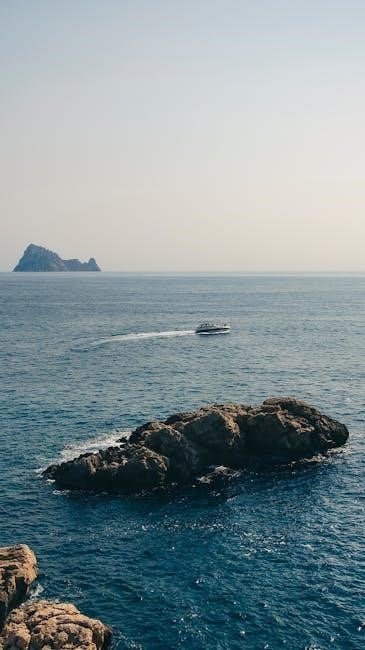
Themes in the Novel
Island of the Blue Dolphins explores several profound themes that resonate deeply with readers. One of the most prominent themes is survival and self-reliance, as Karana navigates the challenges of living alone on a remote island. The novel also delves into solitude and loneliness, highlighting Karana’s emotional journey and her eventual acceptance of her isolated life. Another significant theme is the connection between humans and nature, showcasing Karana’s deep understanding and respect for the natural world. Additionally, the story touches on identity and belonging, as Karana grapples with her cultural heritage and her unique existence apart from her tribe. These themes are woven throughout the narrative, creating a rich and thought-provoking story that continues to captivate readers of all ages.
Symbolism in the Story
The Island of the Blue Dolphins is rich in symbolism, with several elements representing deeper meanings. The island itself symbolizes isolation, survival, and self-discovery, as it serves as both a prison and a sanctuary for Karana. Her weapons, such as the spear and the bow, symbolize her growth from a vulnerable girl into a strong, capable woman. The wild dog, Rontu, represents loyalty and companionship, while the blue dolphins embody freedom and the connection to her heritage. Fire symbolizes both destruction and creation, reflecting Karana’s journey from fear to mastery. The natural world, with its abundance and harshness, serves as a backdrop for Karana’s spiritual growth and understanding of life’s balance. These symbols weave together to create a layered narrative that explores resilience, transformation, and harmony with nature.
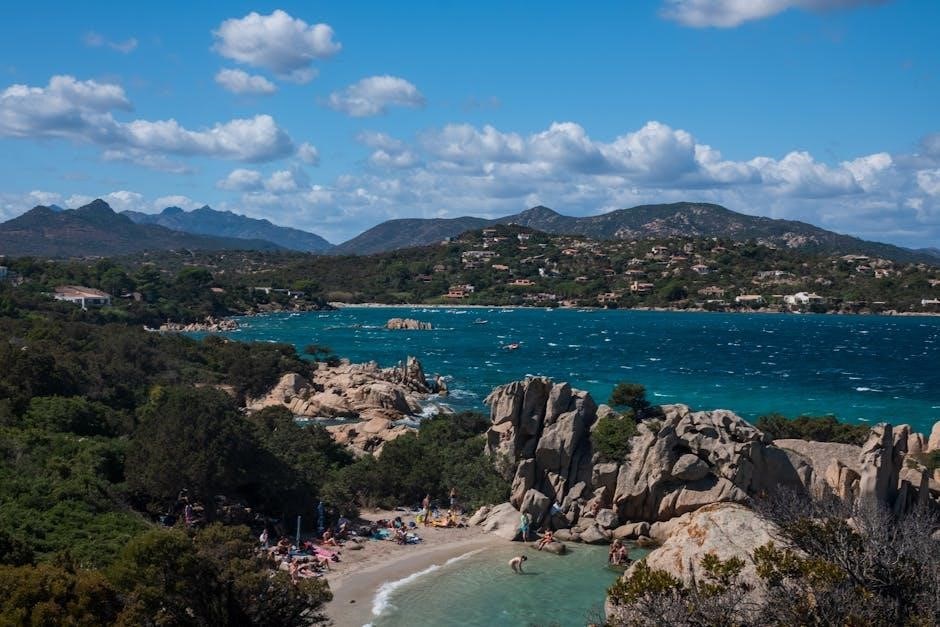
The True Story Behind the Novel
The Island of the Blue Dolphins is inspired by the true story of Juana María, a Nicoleño woman who lived alone on San Nicolas Island in the early 19th century. Juana María was left behind during the evacuation of her people and survived for 18 years before being discovered in 1853. Scott O’Dell adapted her story into a fictionalized account, renaming her Karana and adding imaginative elements to enhance the narrative. While the novel takes creative liberties, it captures the spirit of Juana María’s resilience and adaptability. Her true story reflects the broader historical context of indigenous peoples displaced by European colonization. Juana María’s remarkable survival and eventual integration into a new world remain a testament to human endurance and the enduring connection to one’s heritage.
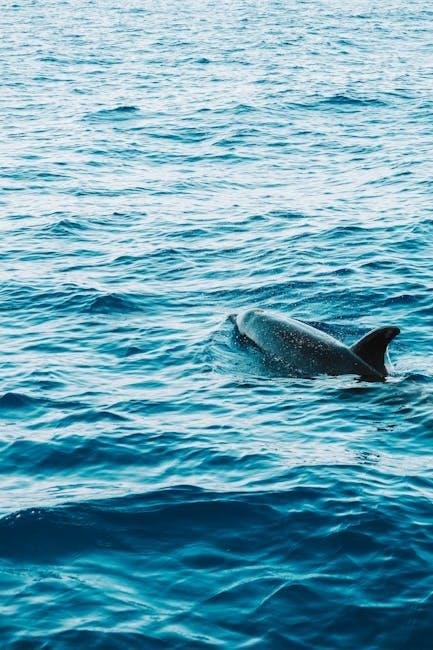
Scott O’Dell’s Biography
Scott O’Dell was an American author best known for his award-winning children’s novels, particularly Island of the Blue Dolphins. Born on May 23, 1898, in Los Angeles, California, O’Dell developed a deep interest in history and the natural world. Before becoming a full-time writer, he worked as a journalist, a teacher, and even in the film industry. His writing career began later in life, but he quickly gained recognition for his ability to craft compelling historical fiction. O’Dell’s works often explored the experiences of indigenous peoples and early settlers in California, reflecting his fascination with the region’s rich cultural heritage. He won the Newbery Medal in 1961 for Island of the Blue Dolphins, cementing his legacy as a master of children’s literature. Throughout his life, he wrote over 60 books, leaving a lasting impact on young readers worldwide.
Survival Strategies of Karana
Karana’s survival on the isolated island of the blue dolphins showcases her resourcefulness and resilience. Initially overwhelmed, she learns to build a sturdy shelter using whalebone and thatch, ensuring protection from harsh weather; She discovers edible plants and seafood, adapting her diet to the island’s resources. Karana also fashions tools from stones and bones, such as a crude knife and spear, to hunt and prepare food. Her ability to start a fire without modern tools is crucial for cooking and warmth. Over time, she tames wild dogs, like Rontu, forming alliances that aid her survival. Karana’s courage in facing predators, like wild boars, and her ingenuity in creating weapons demonstrate her growth from a scared girl to a skilled survivor. Her eventual embrace of solitude and connection with nature highlight her deep adaptation to island life.
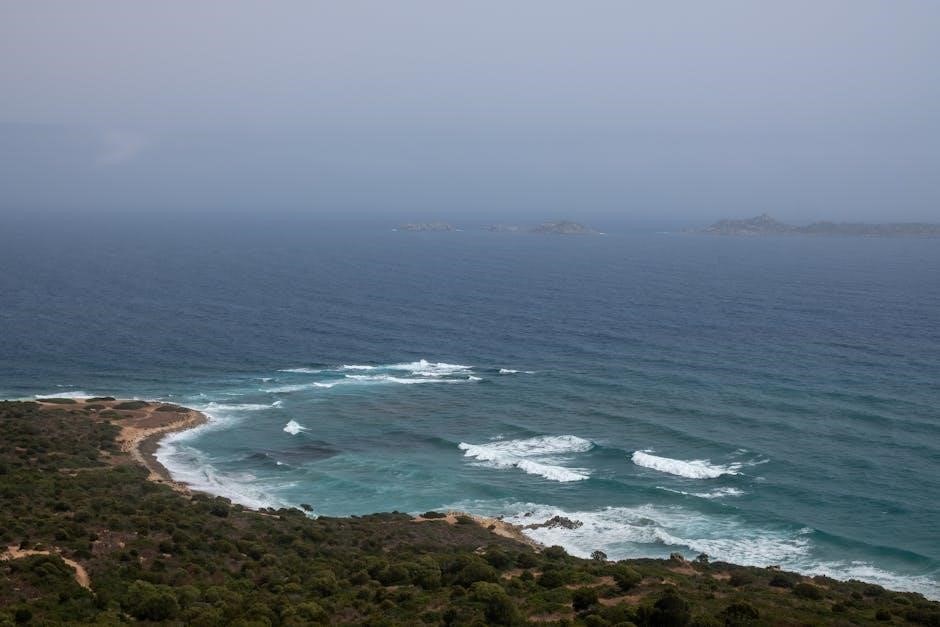
Impact and Reception of the Book
Since its publication in 1960, Island of the Blue Dolphins has received widespread acclaim for its vivid storytelling and strong female protagonist. The novel won the Newbery Medal in 1961, solidifying its place in children’s literature. Readers praise Karana’s resilience and the timeless themes of survival and self-discovery. The book has been translated into numerous languages and remains a popular choice in schools, sparking discussions about courage, independence, and environmental harmony. Its historical and cultural significance, rooted in the story of the Lone Woman of San Nicolas, has also made it a valuable educational resource. Scott O’Dell’s ability to weave fiction with real-life inspiration has captivated audiences, making the novel a beloved classic across generations.
Study Guide and Resources
A variety of study guides and resources are available for Island of the Blue Dolphins, helping readers deepen their understanding of the novel. These resources include chapter summaries, character analyses, and discussion questions. Many study guides are available in PDF format, making them easily accessible for students and educators. Additionally, teaching materials and lesson plans can be found online, offering insights into themes, symbols, and historical context. Websites like Scribd and educational platforms provide downloadable guides, while libraries often offer free access to these resources. These materials are invaluable for classroom discussions, book clubs, or individual study, ensuring a comprehensive exploration of Scott O’Dell’s timeless story. They also cater to different learning styles, making the novel more engaging and accessible for everyone.
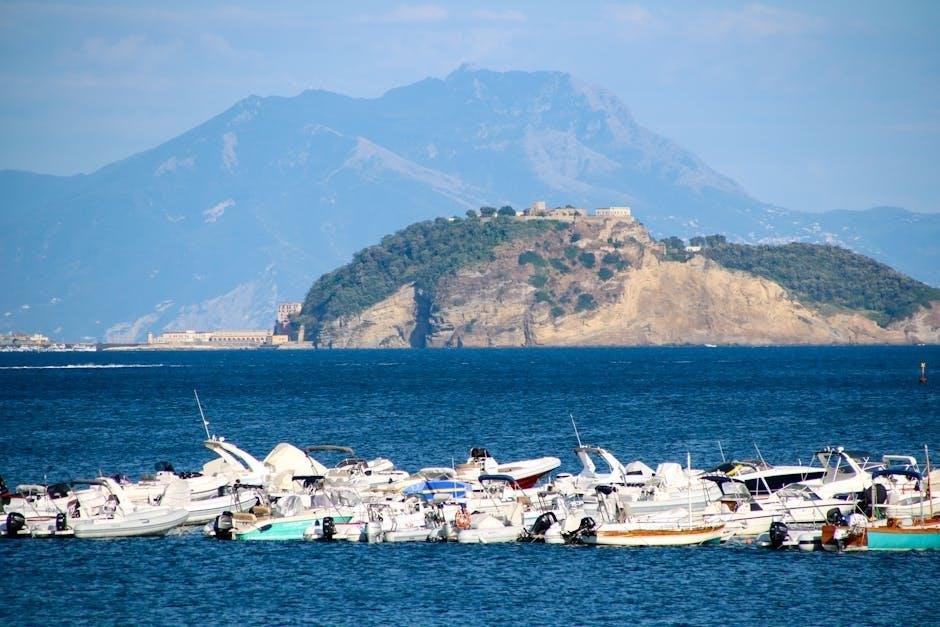
PDF Version Overview
The PDF version of Island of the Blue Dolphins offers a convenient and accessible way to read Scott O’Dell’s beloved novel. Available for download from various online platforms, the PDF format ensures that readers can carry the book on their devices, making it ideal for on-the-go reading. The digital version retains the original storytelling and formatting, preserving the emotional depth and historical richness of Karana’s journey. Many PDF editions include features like full-text search, bookmarks, and adjustable font sizes, enhancing the reading experience. Additionally, some versions may include introductory notes or appendices that provide context about the novel’s historical background. The PDF format is particularly popular among students and educators, as it allows for easy reference and annotation. This version remains faithful to the original narrative, ensuring that readers can fully immerse themselves in Karana’s remarkable story.

Historical Context
The novel Island of the Blue Dolphins is set in the early 19th century and draws inspiration from the true story of the Lone Woman of San Nicolas. This historical context revolves around the indigenous peoples of the Channel Islands, specifically the Tongva tribe, and their interactions with European colonizers. The story highlights the clash of cultures, the resilience of Native Americans, and the impact of Spanish missions on indigenous populations. The historical setting also reflects the isolation and self-reliance of the Lone Woman, mirroring the broader experiences of many Native Americans during this period of significant change and upheaval.
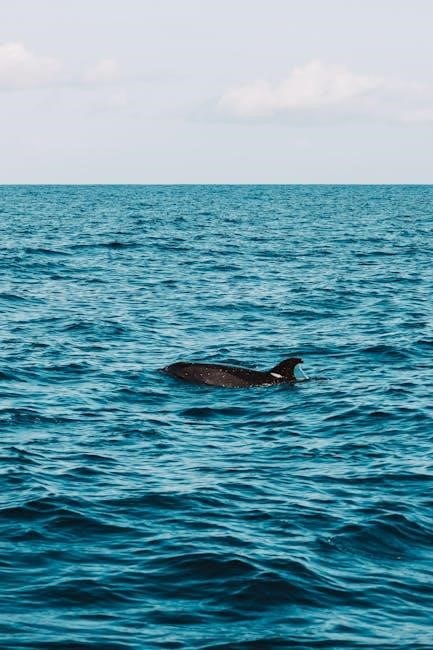
Modern Relevance
Island of the Blue Dolphins remains a timeless story with modern relevance, exploring themes of resilience, self-discovery, and environmental stewardship. Karana’s journey reflects contemporary issues such as solitude, survival, and the human relationship with nature. The novel’s emphasis on indigenous perspectives resonates in today’s discussions about cultural preservation and diversity. Its portrayal of a strong female protagonist also aligns with modern feminist ideals, inspiring readers to embrace independence and courage. The story’s universal themes of adaptability and resourcefulness continue to captivate audiences, making it a valuable read in an era focused on empowerment and sustainability. The book’s enduring popularity highlights its ability to connect with readers across generations, ensuring its relevance in modern literature and education.
Island of the Blue Dolphins is a captivating tale of survival, self-discovery, and resilience, leaving a lasting impact on readers. Karana’s journey from isolation to independence highlights themes of courage and adaptability, resonating universally. Scott O’Dell’s vivid storytelling brings to life the true story of the Lone Woman of San Nicolas, blending historical facts with compelling fiction. The novel’s exploration of solitude, nature, and identity continues to inspire, offering timeless lessons. Its appeal spans generations, making it a cherished read for both young and adult audiences. The story’s enduring popularity underscores its relevance in modern literature, celebrating strength and the human spirit. Island of the Blue Dolphins remains a powerful narrative, fostering empathy and understanding of diverse cultures and environments.

FAQs About the Book
Q: Who is the main character of “Island of the Blue Dolphins”?
A: The protagonist is Karana, a young Native American girl who lives alone on an island off the coast of California.
Q: What is the setting of the story?
A: The novel is set on San Nicolas Island in the early 19th century.
Q: Is “Island of the Blue Dolphins” based on a true story?
A: Yes, it is inspired by the true story of the Lone Woman of San Nicolas, who lived alone on the island for 18 years.

Leave a Reply
You must be logged in to post a comment.